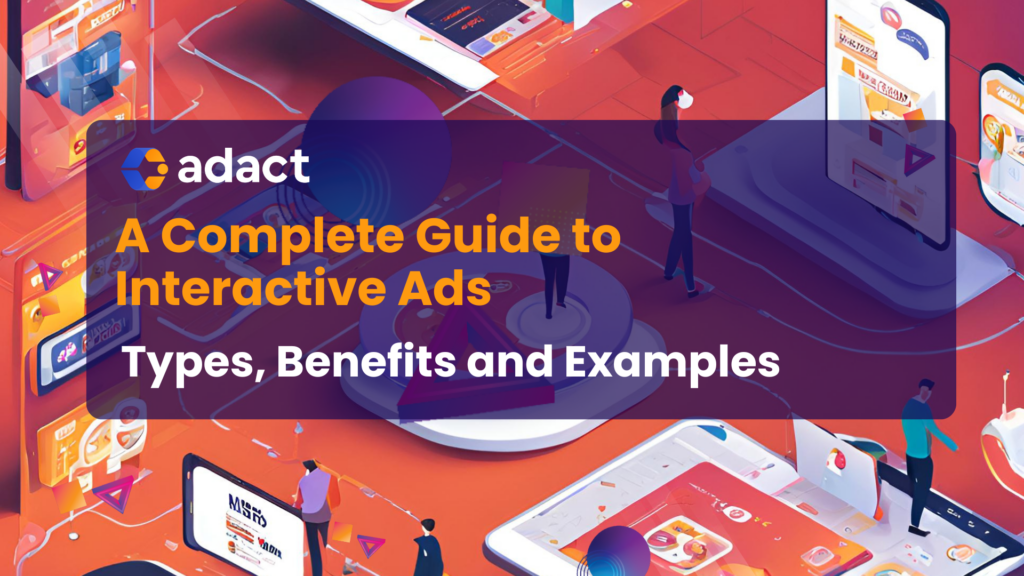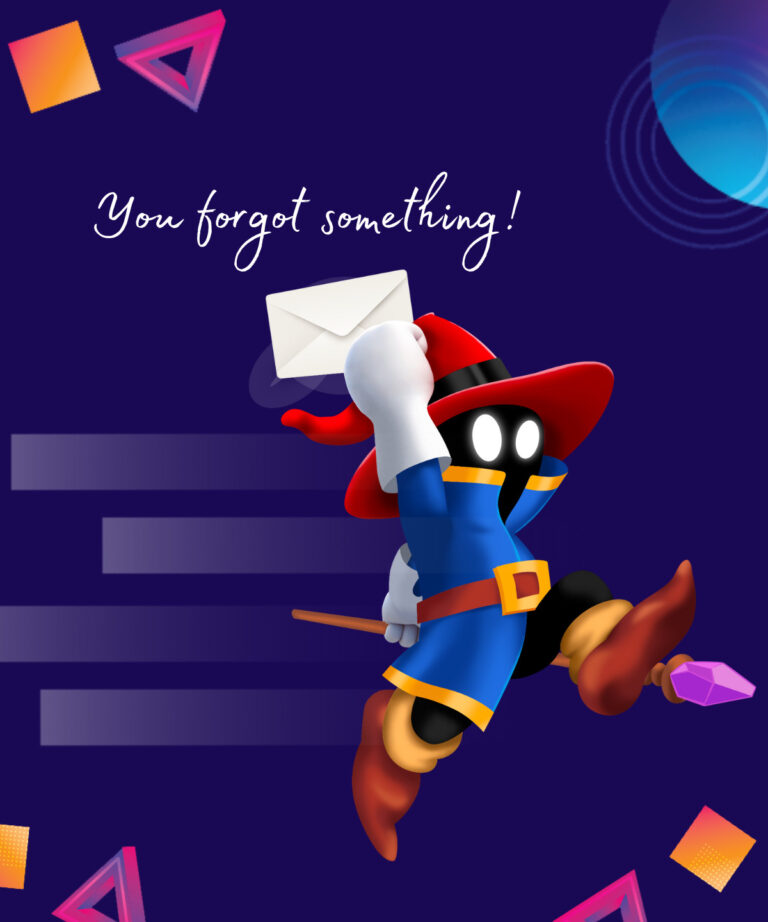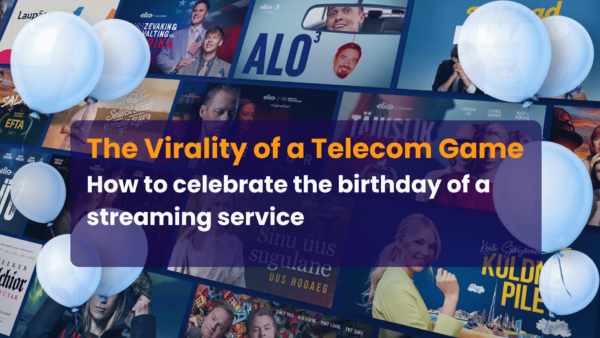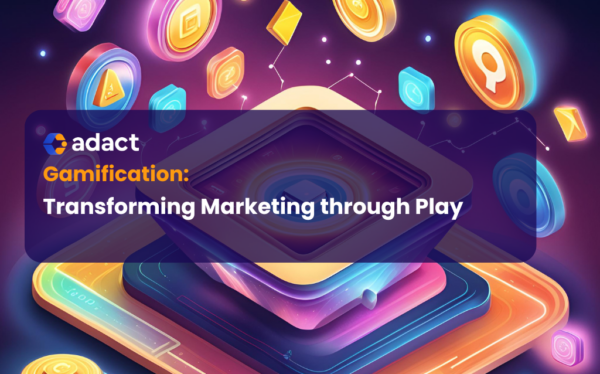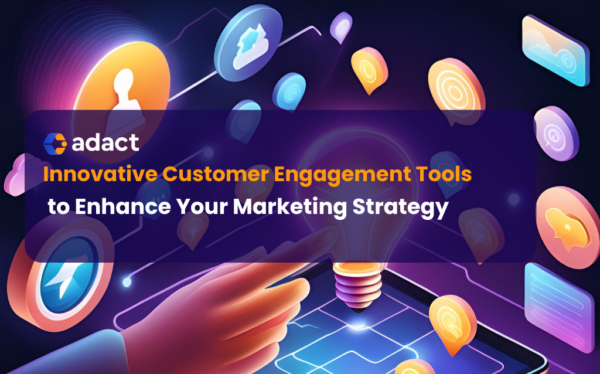Interactive advertising is becoming an increasingly popular digital marketing method.
You might have seen interactive ads from big names like Coca-Cola and Burger King in football and basketball games.
Are you aware that over 80% of ad experts believe interactive ads spike up engagement more effectively than traditional ads?
You see, as digital content consumption rises across devices, your brand has an opportunity to capture consumer attention through creativity and interactivity.
Interactive ad campaigns bring in active participation rather than just randomly bringing up your ads to people.
Could this be a real game changer for your brand awareness? Yes!
In the next five minutes of this post, we’ll break down everything you need to know about interactive ads.
What Are Interactive Ads Campaigns?
Interactive ads are a form of digital advertising that allows consumers to engage directly with the content rather than just view or click on it.
This type of advertising encompasses a wide range of experiences, from simple polls and quizzes to augmented reality filters or even mini-games.
The key element is that the user is involved in shaping the ad experience through their actions. This creates a participatory dynamic that static banner ads lack.
What Are the Benefits of Interactive Advertising?
Now that we’ve covered the basics of interactive advertising let’s go over why you should consider using this format for your next campaign. There are several key advantages to keep in mind.
1. Your campaigns get increased user engagement
Interactive ads prompt viewers to get involved, whether it’s by answering a poll question or playing a branded game.
This boosts time spent with your ad, allowing you to convey key brand messages. Increased immersive engagement also translates to better brand recall down the line.
2. Improved data collection and insights
The participatory nature of interactive ads allows you to gather data on user preferences and reactions.
For example, you can gauge which products resonate based on poll responses or observe how consumers engage with new product demos. These insights enable you to refine targeting and creatives.
3. You'll have a higher conversion rate
By turning ads into experiences that resonate with audiences, interactive formats lift traditional KPIs like click through and conversion rates.
One study by LinkedIn found that interactive b2b ads had click-through rates 2- 3 times higher than benchmark averages.
4. It will pull in new customers
The novelty and creativity of interactive ads can garner the attention of demographics outside a brand’s existing consumer base. The extra engagement and viral sharing potential make them apt for attracting new segments.
5. Increase customer loyalty
Entertaining and positive brand interactions stick in consumer memory, strengthening affinity. Enabling users to actively engage rather than passively view ads also builds goodwill and loyalty.
Types of Interactive Ads
Now that you know the many benefits interactive ads unlock, let’s explore some of the most popular interactive formats marketers and brands are experimenting with.
Quizzes and Polls
Polls and quizzes represent a simple starting point to incorporate interactivity. Asking multiple-choice questions or gathering quick user opinions has proven highly shareable while yielding important consumer insights.
Here’s a large variety of simple to build quizzes and polls.
Interactive Videos
Interactive video ads prompt viewer participation through floating clickable buttons, shoppable tags, branched storytelling, and more. This amps engagement while enabling you to gather data and guide users along conversion funnels.
Games and Gamification
Turning ads into playable branded games can instantly capture user attention and drive extensive engagement. The variety here runs the gamut from basic advergames to more advanced gaming elements like 3D and AR. Gamification marketing is quite more effective than standard marketing because it actually engages the audience.
For a comprehensive list of games you can build right now for your gamified marketing campaigns check here
Augmented Reality (AR)
AR overlays digital elements onto the real world via smartphone cameras. For advertising, this manifests as try-on capabilities, product demos, and even location-based triggers as users navigate stores. AR’s visual novelty lends itself perfectly to interactivity.
Examples of Successful Interactive Ads
Here are some stellar interactive advertising examples of brands that created some of the best interactive campaigns and saw terrific results.
Estonian Football Association
The Estonian Football Association recently used Adact.me to run an interactive gaming campaign targeted at passionate local fans.
Integrated onto their main website, the ad depicted star goalkeeper Karl Jakob Hein defending goal shots.
Fans could actively step into Heins’ shoes by controlling him to block virtual kicks. This dynamic made for an engaging first-person experience heightened through integration with the site’s content.
Fans were rewarded with prizes like a signed Hein jersey and driving participation after successfully saving goals. Ultimately, over 20% of site visitors interacted with the game, demonstrating how interactivity captures visitor attention.
Coca-Cola
Coca-Cola implemented an interactive mobile ad geared to boost trials of its new Coke Zero Sugar product. It partnered with audio recognition app Shazam to tag its TV spot.
When viewers used Shazam during airing, an augmented reality Coke glass would appear pouring cola. The liquid responded to phone motions for a splashy effect.
After virtually filling their glass, consumers received a coupon for a free Coke Zero, which made for a delightful brand encounter. The campaign achieved a 20% Shazam engagement rate and over 50% coupon code usage.
Burger King
Fast food leader Burger King created a playable basketball game overlaid on footage of an NBA court for gamers.
Appearing as an ad unit within streaming provider Hulu’s platform, the concept is tied to BK’s sponsorship of the NBA. Viewers could actively shoot virtual hoops, make baskets, and earn free Whopper sandwiches.
The gamified experience lets BK organically integrate with relevant basketball content. It scored a slam dunk on interaction metrics – attaining click-through rates 500% higher than Hulu benchmarks.
Boursin
Beloved cheese brand Boursin’s ads offer an interactive virtual tour of a refrigerator stocked with complementary food items. Implemented as 360-degree video, phone motions shift perspectives through the chilled interior.
Shoppable tags on displayed products enable one-tap recipes and purchasing functionality that are right within the experience.
This engaging ad format that mixes rich visuals with utility helps drive brand awareness and consideration among relevant consumers. Boursin saw a lift in brand awareness by 9% among the campaign audience.
How to Run Your Own Interactive Ad Campaigns
During our conversation so far, you’ve come to see the benefits of interactive ad campaigns over traditional advertisements.
With this, you can help your brand or business stand out in a competitive market.
This is the direction you should be looking towards for your next ad campaign.
And all you need to create amazing interactive ads is Adact. With Adact, you can create lotteries, quizzes, prediction games, and branded mini-games without writing any code.
All it takes to build your campaign is less than five minutes. ADACT also provides managed campaign activation services, ensuring optimal visibility and performance.
As of this post’s writing, over 5,000 brands across 100+ countries are already reaping benefits.
You have to understand that your brand can’t afford to stay static as consumers appetite for interactive ads increases.
Yes, traditional ads have been great, but interactive ads meet your audience where they want to interact.
Interactive ads FAQ
How can interactive ads increase user engagement compared to static advertisements?
Interactive ads are digital advertisements that engage users by allowing them to participate in the ad experience, rather than just passively viewing it. This can include activities such as answering quizzes, playing mini-games, or interacting with augmented reality elements. Traditional digital ads, on the other hand, are static or video-based ads where the user’s role is limited to viewing the content. Interactive ads create a participatory dynamic, making the ad experience more memorable and engaging.
What are interactive ads, and how do they differ from traditional digital ads?
Interactive ads encourage users to take part in the experience, whether it’s by completing a poll, playing a game, or exploring a 360-degree video. This active participation leads to longer ad interaction times, as users spend more time engaging with the content. The added interactivity also makes the ad more enjoyable and memorable, increasing the chances of brand recall and driving further engagement through sharing or revisiting the ad.
What types of interactive ad formats are available for marketers to use?
Several interactive ad formats are popular among marketers, including:
- Quizzes and Polls: Simple forms of interaction that collect user feedback and provide insights.
- Interactive Videos: Videos with clickable elements that let users explore different storylines or product features.
- Games and Gamification: Branded mini-games that captivate user attention and encourage repeated interaction.
- Augmented Reality (AR): Ads that overlay digital content onto the real world, allowing users to visualize products in their environment. Each format offers unique ways to engage users and achieve specific marketing goals.
Why are interactive ads considered more effective at driving higher conversion rates?
Interactive ads create a deeper connection with the audience by involving them in the ad experience. This active engagement makes users more likely to take desired actions, such as clicking through to a website, filling out a form, or making a purchase. The personalized and entertaining nature of interactive ads also helps to reduce bounce rates and improve conversion metrics compared to traditional ads.
How can brands collect valuable data and insights from interactive advertising campaigns?
Interactive ads enable brands to collect data through user interactions. For example, poll responses can indicate customer preferences, while time spent in a game can reveal product interest levels. This data can then be analyzed to refine targeting, optimize future campaigns, and improve user experiences. Real-time data tracking also allows for quick adjustments to enhance campaign performance based on user behavior.
What are some examples of successful interactive ad campaigns by well-known brands?
You can familiarize yourself with 10s of examples and case studies from our examples page
Are interactive ads suitable for small businesses, or are they mainly for larger companies?
Interactive ads can be used by businesses of all sizes. While larger companies may have more resources to invest in complex interactive experiences, small businesses can still benefit from simpler formats like quizzes, polls, and basic gamification. Platforms like Adact make it easy and affordable for small businesses to create interactive ads quickly, leveling the playing field and allowing them to compete with larger brands in capturing consumer attention.
How quickly can brands create and launch an interactive ad campaign using platforms like Adact?
With platforms like Adact, brands can create interactive ad campaigns in less than five minutes. The platform provides tools to design quizzes, mini-games, prediction games, and other interactive experiences without the need for coding skills. This ease of use enables brands to launch campaigns quickly and efficiently, making it suitable for both time-sensitive promotions and long-term marketing strategies.
What are the key benefits of using gamification in advertising campaigns?
With platforms like Adact, brands can create interactive ad campaigns in less than five minutes. The platform provides tools to design quizzes, mini-games, prediction games, and other interactive experiences without the need for coding skills. This ease of use enables brands to launch campaigns quickly and efficiently, making it suitable for both time-sensitive promotions and long-term marketing strategies.
